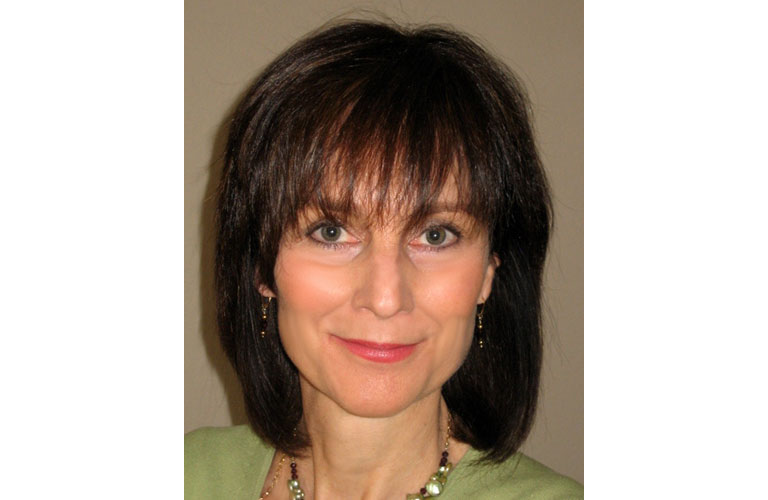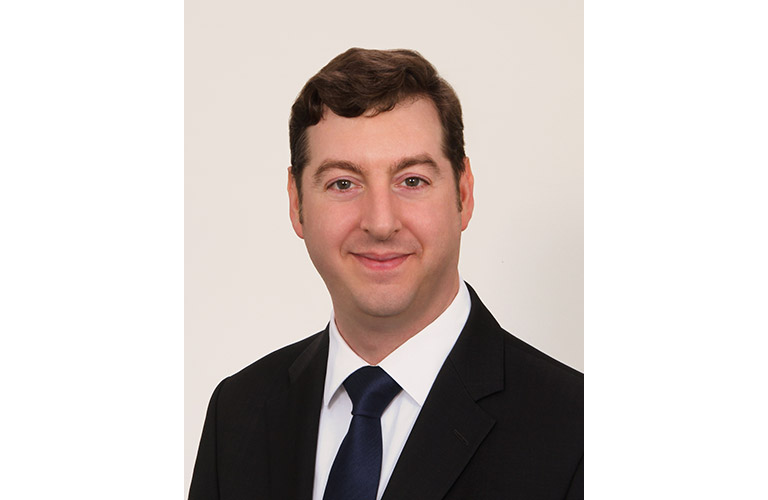Reducing Reverberation with EchoShield: Clinical Outcomes
By Carol Meyers, AuD and Eric Branda, AuD
Improved understanding of speech in background noise is a common desire of hearing aid wearers, and a design goal of hearing aid manufacturers. Over the years, technology has been developed to specifically address this concern. Noise reduction algorithms contribute significantly to sound quality and reduced listening effort; directional microphone technology can substantially improve the signal-to-noise ratio (SNR) at the ear of the listener. An innovation in directional microphone technology became available with the introduction of true binaural streaming of audio information, which is realized in the Siemens/Signia hearing instruments via e2e wireless 3.0. In Signia instruments, this sharing of audio information creates a virtual 8-microphone network and provides a more accurate representation of the acoustical environment. The beamforming technology provides a large advantage for improving the SNR, and was clinically proven to provide better speech recognition in noise performance for the hearing impaired, than was obtained by individuals with normal hearing (Powers and Froehlich, 2014).
Background noise situations can become more challenging for the hearing-impaired listener when environmental factors create unwanted reverberations. In fact, even when background noise is minimal, areas with high reverberation act like background noise as sounds in the environment linger. The unwanted signal remaining present as reverberation can lead to misperceptions of the acoustic cues of the desired speech signal (Nabalek, 1988).
For communication, the effect of reverberation can be significant for those with hearing loss. When a reflected sound wave returns to the ear in less than 0.1 seconds after the original sound, there is no perceived difference between the original sound and the reflected sound. Rather, these two sounds combine into a prolonged sound wave or reverberation. Therefore, a reverberation is not a clear replica of the original sound. As sound bounces off hard surfaces (walls, ceilings, floors, tables, etc), multiple reflections occur in addition to the original sound source. These multiple reflections create a natural acoustic environment which can interfere with speech cues.
Reverberations affect temporal and spectral cues and flatten formant transitions which negatively impact intelligibility (Nabelek et al, 1989). Although moderate amounts of reverberation do not affect speech recognition performance by normal hearing listeners, reverberations have a detrimental effect on speech intelligibility for those individuals with hearing loss (Assmann and Summerfield, 2004). Reinhart et al (2016) found aided consonant identification significantly decreased as reverberation time increased. Research has shown that hearing impaired listeners, both unaided and aided, report as many speech understanding problems in reverberation as they do in background noise (Cox, 1997, Johnson et al, 2010).
Introducing EchoShield
To help reduce the negative effects of the reverberant environment, Signia has introduced a new feature called EchoShield. When the hearing aid recognizes the original signal coming in at a softer level after the direct target sound, the feature is automatically and seamlessly activated, and less gain is applied to the reflected signal. Implementation of EchoShield is designed to prevent the reverberation signal from interfering with the target signal and thus degrading speech. Therefore, the goal of EchoShield is to effectively manage the reverberation situation and preserve sound quality and audibility in challenging, but common everyday environments. These environments may be found in large public facilities such as places of worship, lecture halls, senior centers, and restaurants or smaller spaces within any home with hardwood or tile floors. Reverberation can be annoying, and tends to make speech sound louder. Without reducing the effects of reverberation, wearers may look to decrease the overall gain of the hearing aid to improve and/or tolerate the situation, which will negatively impact audibility.
Clinical Study
Other hearing aid algorithms designed to reduce the effects of reverberation have been introduced to the market. However, little clinical data has been published to demonstrate the benefits of these algorithms. The current study was designed to investigate the perceived effects of the EchoShield algorithm for hearing-impaired listeners in a reverberant environment.
The clinical study was conducted at Hörzentrum Oldenburg, Germany. Participants were experienced hearing aid wearers with a mean age of 71 (age range 62 – 80 years). Fifteen subjects (nine male / six female) were fit with bilateral Signia Pure 7px hearing instruments in a closed fitting (double domes). The hearing instruments were programmed according to the Signia proprietary fitting algorithm (referred to as “primax fit” in the Connexx® fitting software). The hearing instruments were set with 2 programs: Universal and Reverberant Room program (utilizing the EchoShield feature).
Two different test signals, Speech and Hand Clap were presented via twelve speakers in a circular array in a sound-treated test booth. Speech was a recorded single male speaker in quiet, and Hand Clap was a recorded hand clap. Reverberation of both signals was added synthetically via the Steinberg Cubase REVerence Plugin, which utilizes actual impulse responses to make reverberation sound more realistic.
Each participant was given a touch screen that allowed for switching between “A” & “B”. “A” utilized the Universal Program with the reference signal in which the wearer would hear the reverberant signal without any modifications via EchoShield. This reference signal was presented at about 68dB (i.e., slightly louder than normal conversational level – similar to as if the speaker was addressing a small audience). “B” utilized the Reverberant Room program, thus reducing the reverberation. “B” also provided the wearer the opportunity to adjust the level of the signal via “+” and “-” buttons. The presentation order and start volume were randomized for comparisons.
Participants listened to both speech and hand clap with the algorithm “on” and “off”. “Off” was used as the reference condition. Then with the algorithm “on”, they were asked to match the sound impression to be the same as when the algorithm was “off”. Using the “+” and “-” buttons, participants were instructed to adjust the signal from “B” until it was as similar as possible to signal “A”. The goal was to obtain a similar sound impression by making “B” sound as loud as “A”. The “B” signal could be adjusted +/-12 dB compared to the reference signal “A”. Participants repeated the task for each of the four conditions to allow for assessment of test/re-test reliability.
Clinical Test Results
For all trials combined, results indicated a mean 1.29 dB difference for Speech (p<.05) and a mean of 3.27 dB difference (p<.001) for Hand Clap in order to match the sound impressions, i.e. the difference between the Reverberant Room program and the Universal program. To further assess the data, results for the initial trials and repeated trials were averaged for each participant. For each category of test and retest trials, four participants found the task difficult to understand and showed inconsistency between test and retest. Participants with greater than 6 dB average difference between test and retest trials were excluded from the analysis. For this subgroup with acceptable test-retest findings, the mean for Speech was a 1.2 dB difference (p<.05) and for Hand Clap a 4.73 dB difference (p<.005).
These results indicate that the EchoShield feature is effective at reducing perceived echo for both reverberant speech and select non-speech signals. Importantly, this degree of reduction appears to have an impact regarding ease of listening in a difficult speech-in-noise task. Littman et al 2016, evaluated listening effort, objectively (EEG activity) and subjectively, with and without the EchoShield feature activated in the Signia Pure primax technology. Their findings for both the objective and subjective measurements revealed a decrease in listening effort with the feature activated. These clinical findings support the above laboratory study and address the benefit of the EchoShield feature.
Conclusion
Individuals may find themselves in multiple environments throughout the day where reverberation is occurring, e.g., work environments, social situations, activities at home. Individuals may or may not recognize reverberation exists or understand the impact these duplicate sounds have on sound quality and speech understanding. Their overall sound impression of the environment is such that the wearer may elect to lower the volume in search of better sound quality or speech understanding and/or to reduce listening effort. However, reducing gain is likely to impact audibility and negatively impact speech understanding. The performance advantage of EchoShield can be demonstrated by analysis of the reverberation adjustments. Clinical findings revealed participants on average found higher levels of reverberation acceptable when using the Reverberant Room program vs. the Universal program. Since reverberation is detrimental to speech understanding, these results suggest that wearers can benefit from a de-reverberation program utilizing the EchoShield algorithm in environments where reverberations are most likely to disrupt speech understanding. Specifically, wearers who are capable of utilizing multiple programs in a hearing aid and are aware of their acoustic environment can especially take advantage of this algorithm.
References
Assmann, P. F. & Summerfield, Q. (2004). The perception of speech under adverse acoustic conditions. In S. Greenberg W. A. Ainsworth, A. N. Popper, R. R. Fay (Eds.), Speech Processing in the Auditory System (pp. 231-308). New York: Springer.
Cox, R. M. (1997). Administration and application of the APHAB. Hearing Journal, 50(4), 32-35.
Johnson, J., Cox, R. M., & Alexander, G. (2010). Development of APHAB norms for WDRC hearing aids and Reducing Reverberation with EchoShield: Clinical Outcomes DocID D00155527, 2016-07-29 4 comparisons with original norms. Ear and Hearing, 31(1), 47-55.
Littmann, V., Beilin, J., Froehlich, M., Branda, E., & Schä- fer, P. J. (2016). Clinical studies show advanced hearing aid technology reduces listening effort. Hearing Review, 23(4), 36.
Nabelek, A. K. (1988). Identification of vowels in quiet, noise, and reverberation: Relationships with age and hearing loss. Journal of Acoustical Society of America, 84, 476-484.
Nabelek, A. K., Letowski, T. R., & Tucker, F. M. (1989). Reverberant overlap- and self-masking in consonant identification. Journal of Acoustical Society of America, 86, 1259–1261.
Powers, T. & Froehlich, M. (2014). Clinical Results with a New Wireless Binaural Directional Hearing System. Hearing Review, 21(11), 32-34.
Reinhart, P. N., Souza, P. E., Srinivasan, N. K., Gallun, F. J. (2016). Effects of reverberation and compression on consonant identification in individuals with hearing impairment. Ear & Hearing, 37(2), 144-152.

